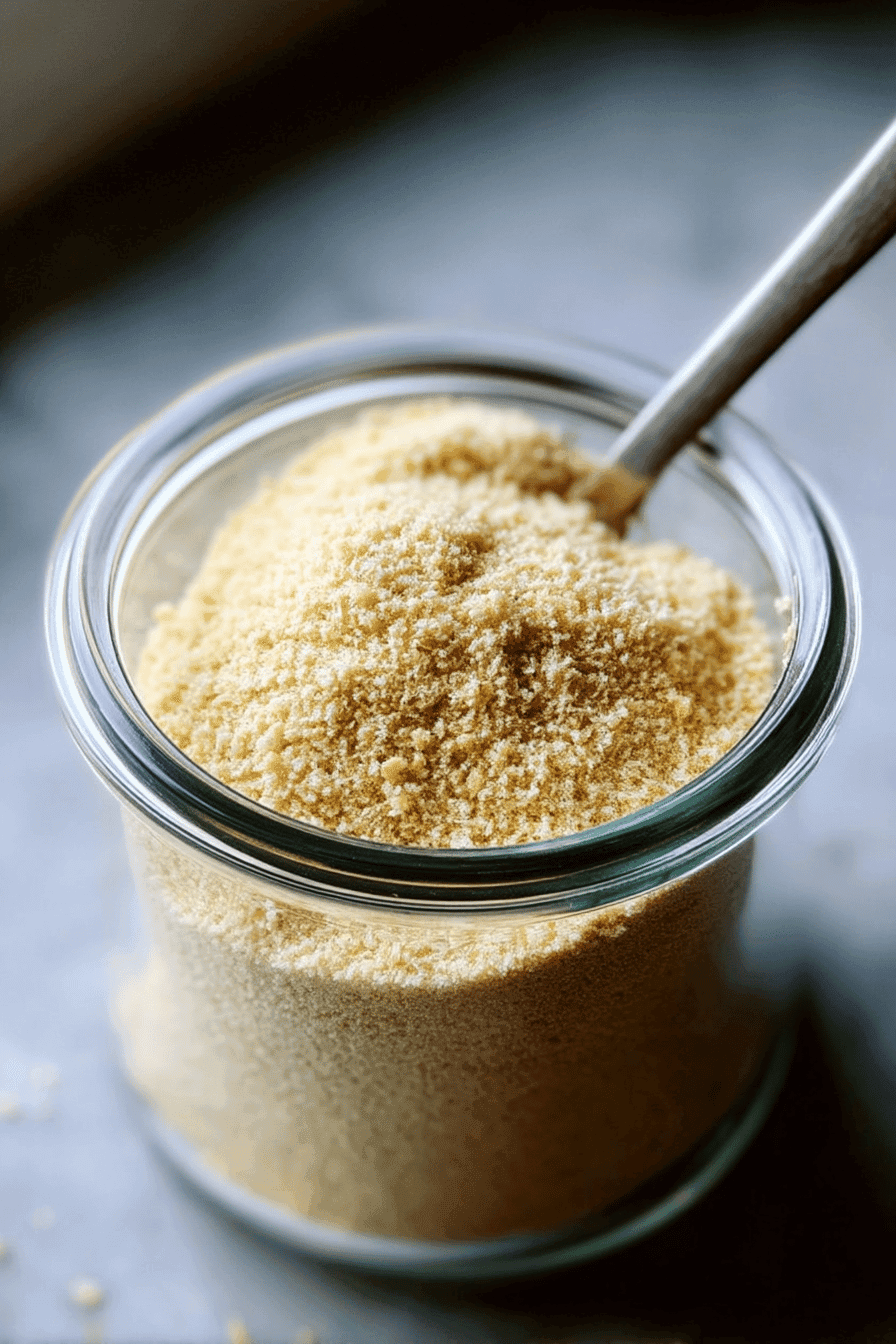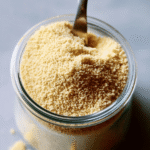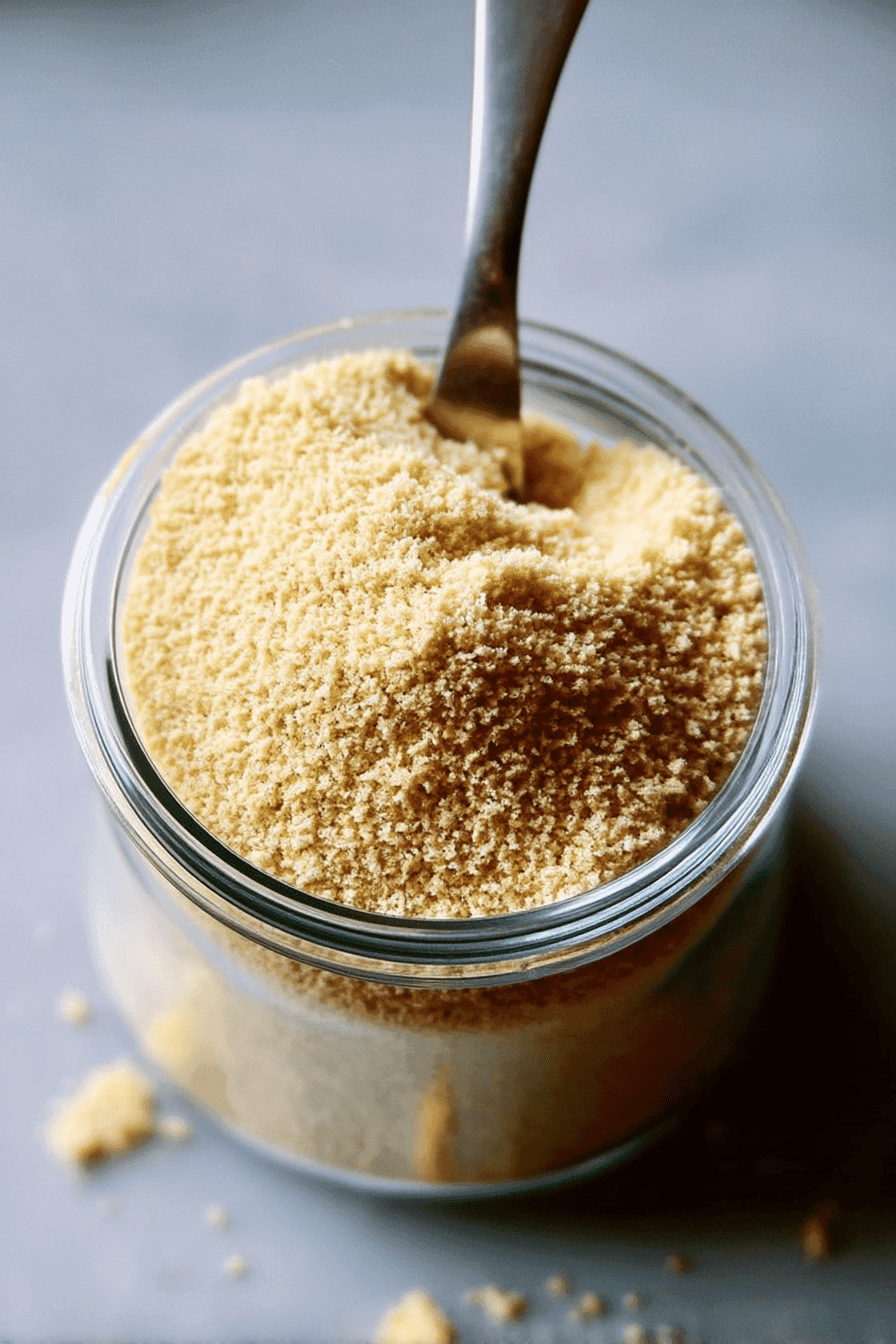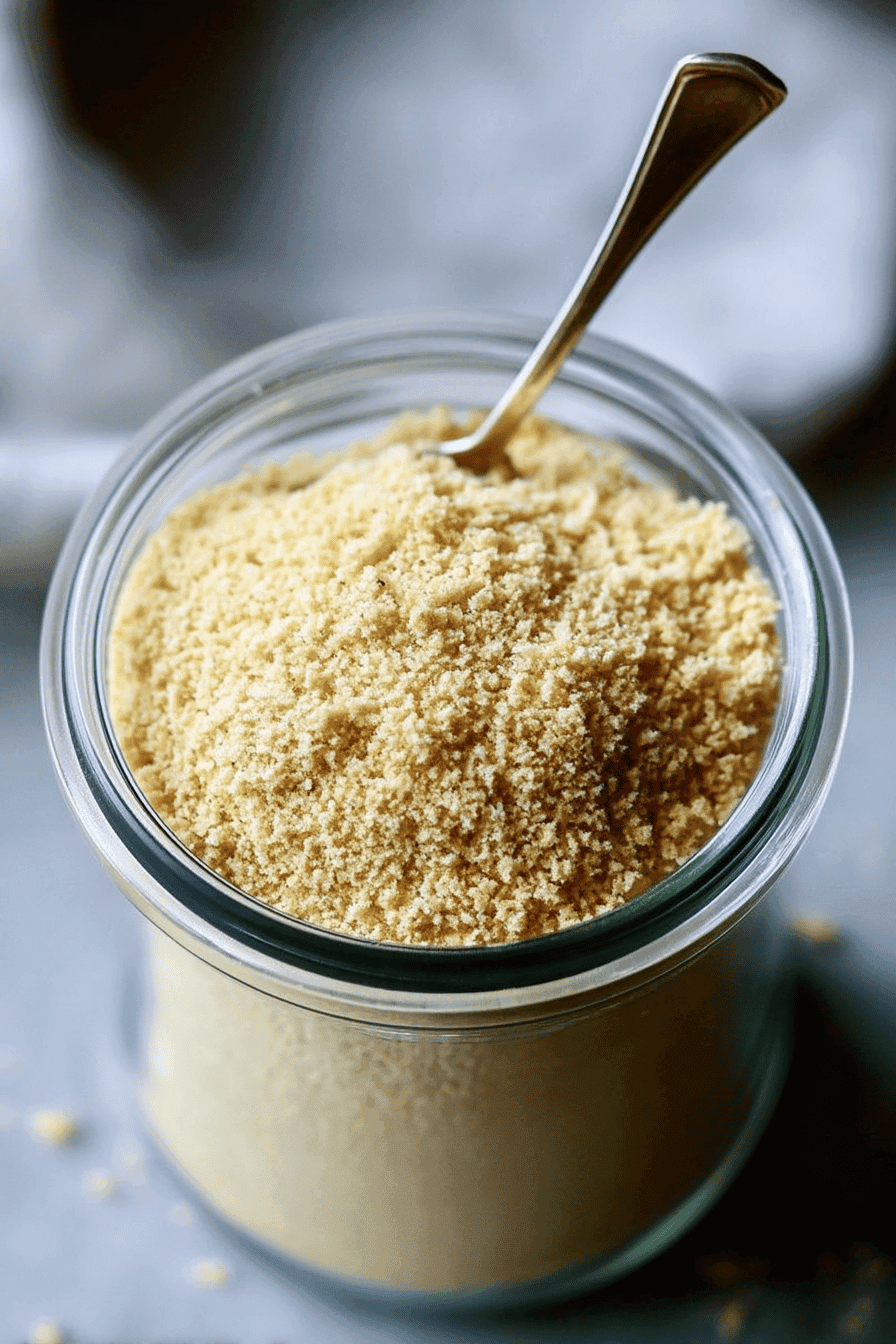Benefits and Advantages of vegan parmesan cheese
Vegan parmesan cheese offers numerous benefits that make it an excellent choice for both health-conscious individuals and those seeking plant-based alternatives. It is incredibly simple to prepare, requiring just a few easy-to-find ingredients that come together quickly. This dairy-free cheese is nutrient-rich, featuring components like nuts and nutritional yeast, which provide proteins, healthy fats, and essential vitamins such as vitamin B12 often missing in vegan diets. Additionally, vegan parmesan cheese is free from lactose and cholesterol, making it suitable for lactose intolerant people and those concerned with heart health.
The recipe is versatile, allowing it to be sprinkled over pasta, salads, soups, and roasted vegetables, boosting flavor without introducing allergens or dairy. Naturally gluten-free and low in calories, it appeals to gluten-sensitive and calorie-conscious consumers. Its taste and texture closely resemble traditional parmesan, easing the switch for those reducing dairy intake or adopting a plant-based lifestyle. This combination of health benefits, flavor fidelity, and adaptability makes vegan parmesan cheese a wonderful addition to modern cooking.
Jump To
- 1. Benefits and Advantages of vegan parmesan cheese
- 2. Essential Ingredients for vegan parmesan cheese
- 3. Dietary Substitutions to Customize Your vegan parmesan cheese
- 4. How to Prepare the Perfect vegan parmesan cheese: Step-by-Step Guide
- 5. Advanced Tips and Variations
- 6. How to Store vegan parmesan cheese: Best Practices
- 7. Nutritional Value of vegan parmesan cheese
- 8. FAQs: Frequently Asked Questions About vegan parmesan cheese
- 9. vegan parmesan cheese
Essential Ingredients for vegan parmesan cheese
- 3/4 cup raw cashews
- 3 tablespoons nutritional yeast flakes
- 3/4 teaspoon sea salt
- 1/4 teaspoon garlic powder
- Optional (for variations): lemon juice for brightness, white miso paste, plant-based milk
Cashews provide a creamy texture and healthy fats, while nutritional yeast contributes the signature cheesy umami flavor and vitamin B12. Sea salt enhances overall taste, and garlic powder adds subtle zest. All ingredients are naturally gluten-free and low calorie, with optional additions to customize flavor and consistency. For nut allergies, seeds like sunflower or pumpkin can replace cashews, keeping texture and nutrition balanced.
Dietary Substitutions to Customize Your vegan parmesan cheese
Customizing vegan parmesan cheese to fit different dietary needs is straightforward and allows flexibility.
- Nut allergies: Substitute cashews with toasted sunflower seeds or pumpkin seeds. These maintain texture and a pleasant nutty flavor without the allergen risk.
- Yeast sensitivity: Replace nutritional yeast with ground flaxseeds or hemp seeds combined with white miso paste for umami flavor without yeast.
- Low sodium: Use low-sodium sea salt or omit added salt, increasing lemon juice slightly to preserve brightness.
- Oil-free versions: Skip adding any oils; natural fats in nuts or seeds provide adequate creaminess.
- Calorie-conscious: Reduce nut quantity and enhance flavor with extra garlic powder or lemon juice.
- Gluten-free: Naturally gluten-free ingredients are used; verify labels of processed items for cross-contamination.
These substitutions keep the recipe inclusive, flavorful, and nutritionally robust without compromising the authentic parmesan taste.
How to Prepare the Perfect vegan parmesan cheese: Step-by-Step Guide
- Gather ingredients: Prepare raw cashews, nutritional yeast, garlic powder, sea salt, and lemon juice. Use fresh, raw nuts for best results.
- Process cashews: Place cashews in a food processor or high-speed blender. Pulse until the cashews resemble a fine meal similar to grated parmesan.
- Add seasonings: Add nutritional yeast, garlic powder, sea salt, and lemon juice into the blender. Pulse several times to incorporate flavors evenly without overprocessing into a paste.
- Taste and adjust: Check flavor. Add more nutritional yeast for cheesiness, lemon juice for brightness, or salt if needed.
- Make dietary swaps if needed: Substitute cashews with seeds for allergies or reduce salt for low sodium.
- Store properly: Transfer to an airtight container. Use immediately as a topping or refrigerate up to two weeks.
- Freeze for longer storage: Portion into small containers and freeze for up to three months. Thaw overnight in the fridge before use.
- Use versatile: Sprinkle on pasta, salads, soups, roasted veggies, tofu, or even popcorn. It does not melt like dairy parmesan but adds savory flavor and texture.
This method produces rich, flavorful vegan parmesan cheese that suits a wide range of dishes and dietary preferences.
For more on nutritional yeast, see how to use nutritional yeast in cooking.
Advanced Tips and Variations
To enhance your vegan parmesan cheese, try lightly toasting the raw cashews before blending to bring out a richer flavor and add a subtle crunch. For a smoky twist, mix in smoked paprika or chipotle powder, which pairs well with Italian-style dishes. Incorporating fresh herbs like basil or oregano will provide a flavorful, Mediterranean touch perfect for sprinkling over pasta or salads.
If you prefer a creamier texture, blend in soaked cashews or add a splash of plant-based milk such as almond or oat milk. To boost nutrition, try adding ground hemp seeds or flaxseeds, which increase omega-3 fatty acids and protein content. Adjust the tanginess of the cheese to your liking by varying the amount of lemon juice or substituting apple cider vinegar for a different acid profile.
Avoid over-processing the mixture to ensure the cheese remains powdery rather than turning into a paste, as this preserves the ideal texture for sprinkling. For more versatility, consider making a firmer, meltable vegan parmesan by blending starches, oils, and flavorings and then gently steaming the mixture until it firms up. These variations offer ways to personalize the recipe while keeping it delicious and adaptable.
How to Store vegan parmesan cheese: Best Practices
Proper storage is key to preserving the flavor and freshness of vegan parmesan cheese. Store it in an airtight container in the refrigerator to protect it from moisture and odors. Under refrigeration, the cheese stays fresh for up to two weeks.
For longer storage, portion the cheese into small freezer-safe containers or bags and freeze it. Frozen vegan parmesan cheese can last up to three months without significant loss of quality. When ready to use, thaw the cheese overnight in the refrigerator to maintain its texture. Avoid thawing at room temperature as it may lead to moisture buildup.
Do not heat the cheese directly; instead, sprinkle it onto hot dishes to warm it gently without altering the texture. Vacuum-sealing the cheese before freezing can extend shelf life further and prevent freezer burn. Following these storage guidelines will ensure your vegan parmesan cheese remains flavorful and ready for use in your favorite recipes.
Nutritional Value of vegan parmesan cheese
| Nutrient | Amount Per Tablespoon | Notes |
|---|---|---|
| Calories | 44 kcal | From nuts and nutritional yeast |
| Carbohydrates | 3 g | Mostly from cashews |
| Protein | 1.8 g | Nuts provide plant-based protein |
| Total Fat | 3 g | Includes healthy unsaturated fats |
| Saturated Fat | 0.6 g | Low saturated fat content |
| Sodium | 92 mg | Adjustable per recipe salt levels |
| Fiber | 0.7 g | Contributes to digestive health |
| Cholesterol | 0 mg | Dairy-free and cholesterol-free |
Variations with added ingredients such as starches, oils, or miso paste can adjust nutritional values, sometimes increasing calories and fat slightly. Overall, vegan parmesan cheese offers a nutrient-dense, heart-healthy alternative to traditional parmesan.

FAQs: Frequently Asked Questions About vegan parmesan cheese
Can I make vegan Parmesan cheese without nuts if I have allergies?
Yes, you can make a nut-free version of vegan Parmesan cheese using seeds like sunflower, pumpkin (pepitas), or hemp seeds. These seeds provide a similar texture and a slightly different but pleasant flavor. Make sure to toast them lightly for extra flavor before blending with nutritional yeast and seasonings. This option is safe for those with tree nut allergies and still works well as a topping on pasta, salads, or popcorn.
How should I store vegan Parmesan cheese and how long does it last?
Vegan Parmesan cheese should be stored in an airtight container in the refrigerator, where it will stay fresh for about 3 to 4 weeks. For longer storage, you can freeze it for up to 3 months. Avoid keeping it at room temperature to prevent spoilage, especially since homemade versions don’t contain preservatives.
Does vegan Parmesan cheese melt like traditional Parmesan?
Vegan Parmesan cheese typically does not melt like traditional Parmesan. Instead, it has a slightly gritty or powdery texture that adds flavor and nuttiness when sprinkled on dishes. While it won’t become gooey or stretchy in sauces, it works excellently in recipes like pesto, pasta toppings, and salad dressings.
Can I soak cashews before making vegan Parmesan cheese?
It is best to use dry cashews rather than soaked for vegan Parmesan cheese to achieve the correct fine, powdery texture. Soaking cashews introduces moisture, which can make the mixture clump or become paste-like. If you choose to soak, be sure to dehydrate or thoroughly dry them before use to maintain the powdery consistency.
What can I use instead of nutritional yeast if I want a yeast-free vegan Parmesan?
If you need a yeast-free vegan Parmesan, you can substitute nutritional yeast with ingredients such as toasted ground sunflower seeds or add a small amount of white miso paste to replicate the savory, umami flavor. Another option is to combine ground flaxseeds or hemp seeds with garlic powder and salt for depth. Adjust seasoning to taste, as these alternatives won’t fully replace nutritional yeast’s cheesy flavor but provide a tasty alternative.

vegan parmesan cheese
- Total Time: 5 minutes (basic) to overnight (firm version)
- Yield: About 1 cup 1x
- Diet: Vegan, Dairy-Free, Gluten-Free, Nut-Free option available
Description
🥜 Experience the rich, cheesy flavor of parmesan with this easy-to-make vegan parmesan cheese recipe that’s perfect for dairy-free diets.
🌱 This versatile vegan alternative enhances pasta, pizza, salads, and more while being quick to prepare and long-lasting.
Ingredients
3/4 cup raw cashews
3 tablespoons nutritional yeast flakes
3/4 teaspoon sea salt
1/4 teaspoon garlic powder
lemon juice for brightness
white miso paste
plant-based milk
Instructions
Gather ingredients: Prepare raw cashews, nutritional yeast, garlic powder, sea salt, and lemon juice. Use fresh, raw nuts for best results.
Process cashews: Place cashews in a food processor or high-speed blender. Pulse until the cashews resemble a fine meal similar to grated parmesan.
Add seasonings: Add nutritional yeast, garlic powder, sea salt, and lemon juice into the blender. Pulse several times to incorporate flavors evenly without overprocessing into a paste.
Taste and adjust: Check flavor. Add more nutritional yeast for cheesiness, lemon juice for brightness, or salt if needed.
Make dietary swaps if needed: Substitute cashews with seeds for allergies or reduce salt for low sodium.
Store properly: Transfer to an airtight container. Use immediately as a topping or refrigerate up to two weeks.
Freeze for longer storage: Portion into small containers and freeze for up to three months. Thaw overnight in the fridge before use.
Use versatile: Sprinkle on pasta, salads, soups, roasted veggies, tofu, or even popcorn. It does not melt like dairy parmesan but adds savory flavor and texture.
Notes
🌰 Use raw, dry cashews for the best powdery texture; avoid soaking to prevent paste consistency.
⚙️ Pulse ingredients just enough to achieve a fine meal texture and avoid overprocessing.
🍕 Use this vegan parmesan as a topping on pasta, pizza, salads, soups, roasted vegetables, and popcorn for added flavor.
- Prep Time: 5 minutes
- Optional steaming time (for firm version): 35-45 minutes plus overnight chilling
- Cook Time: 0 minutes (no cooking required for basic version)
- Category: Condiment
- Method: Blending or steaming
- Cuisine: Vegan
Nutrition
- Serving Size: 1 tablespoon
- Calories: 44
- Sugar: 0 g
- Sodium: 92 mg
- Fat: 3 g
- Saturated Fat: 0.6 g
- Unsaturated Fat: 2 g
- Trans Fat: 0 g
- Carbohydrates: 3 g
- Fiber: 0.7 g
- Protein: 1.8 g
- Cholesterol: 0 mg
Keywords: Vegan, Parmesan, Cheese, Dairy-Free


